Cameroon 
The name Cameroon originates from the Portuguese «Rio dos Cameroes» which means river of prawns. The name later changed to Cameroon and Cameroun in English and French respectively. The country gained its independence on 1 January 1960 and became the United Republic of Cameroon in 1972. Thus, was born Cameroon, a territorial entity that has survived despite the vicissitudes of history and which is now the glory and pride of Cameroonians.
Cameroon, otherwise known as “Africa in miniature”, is a country located in Central Africa, at the bottom of the Gulf of Guinea, a little above the equator. It is bordered to the North by Chad, to the East by the Central African Republic, to the South by Congo, Gabon, and Equatorial Guinea, and the West by Nigeria. Like hardly any other African country, it presents a condensed collection of incredible opportunities, wealth, and diversity in terms of biogeography, human resources, culture, climate, natural resources, and language. Thus, the West and the north are linked to the high densities of the countries of the Gulf of Guinea, while the South and the East have very low densities of Central Africa. It is a country that invites visitors to discover its traditions and cultures as well as to ecotourism and to safaris. Cameroon is home to incredible wonders. When you discover this vast territory, the spectacle is incessant – an authentic and warm population combined with a panorama of high tickling clouds, rare animals, volcanic massifs, isolated beaches, and savannah as far as the eye can see. The country has a great biogeographical diversity characterized by the tropical forest, the savannah, the Sahel, and the ocean. Cameroon also boasts of linguistic diversity with more than 200 national languages spoken; cultural diversity with the distinction between French and English speakers; religious diversity marked by the peaceful cohabitation of many religions: Christian, Muslims and traditional believers It is thanks to this great diversity, its many opportunities, and riches of all kinds that make it unique in Africa, that Cameroon is considered “Africa in miniature”, as it is the condensed version of everything that can be found in Africa. Cameroon is divided into the following regions that each boast of diverse sites of interest:

The Northern Region
In this part of Cameroon, diversity is present in the art of living, folklore, housing, and even cooking. The oval-shaped Massa huts in the North of the country are unique in the world; the region also boasts of the great Lamidats, the lunar landscapes, the lakes with a high concentration of hippos, national parks, and caves.
Rhumsiki
According to a legend, Rhumsiki was founded by the Kapok hunter named Siki, a native of the high plateau. He discovered a welcoming site and chose to settle there. The village of Rhumsiki is situated in one of the most extraordinary landscapes: a ‘lunal landscape’. It is preferable to spend the night there in order to fully see the landscape at sunset and sunrise. During sunset as at sunrise, the rocky peaks and the surrounding savannah take on ocher and radiant colors, thus making the landscape even more fascinating.
Lamidat of Rey-Bouba
The Lamidat is a major witness to the history of Islam in Cameroon. It was built under the reign of Bouba Ndjidda (1798 – 1866) during the period from 1805 to 1808. This first known ruler of the Lamidat came from the Mali region. He and his Fulani warriors settled on the banks of the Mayo-Rey river. Structurally, the Lamidat of Rey- Bouba can be compared to the royal palaces of Abomey. It constitutes the heritage of customary power and has undeniable historical, cultural, social, and educational values. The importance of the protection of this palace comes from the need to safeguard a historical monument, one of the last to keep its original face which materializes 200 years of history. It has been declared a World Heritage Site by UNESCO. Those who wish to meet Bouba must register no later than 8 a.m. and wait for an answer which may not be given the same day. The idea is to send an audience, otherwise, there is no hope of being able to enter the Lamidat.
The Southern Region
The Southern Region is an area of dense forests and natural islands, golden sandy beaches and the Lobe Falls. Meals in this region are garnished with fresh seafood, prawns, braised fish, fish skewers, Ebandja, and Mabang (traditional local dishes seasoned with local spices) accompanied by cassava and fried plantain.
Kribi
The region of Kribi is known as the real Cameroonian Riviera, with its large white sandy beaches that stretch as far as the eye can see, surrounded by splendid coconut trees. The town Kribi is a real crossroads where the sea with its numerous beaches meets a magnificent equatorial forest. Kribi is also the Lobe estuary, a rare place in the world where a river flows into the ocean through a series of waterfalls over 30 meters high. In addition, all along the Lobe River, there are villages of Pygmies.
Pygmy villages
The Pygmies are considered to be the first inhabitants of Cameroon. They are characterized by their small size and have lived by hunting and gathering in the forests of Southern and Eastern Cameroon for about 5,000 years. But because of the desire of national and multinational companies for arable land and the consequent felling of trees, many of them are now homeless, marginalized, and exploited. Their cultures and traditions are threatened with extinction.
The Central Region
The Central Region is home to the political capital of Cameroon: Yaounde. This region is remarkable for its humid climate, its folklore, and customs of its inhabitants. It is an area of equatorial forests and large rivers.
Cathedral of ‘Our Lady of Victory
During the second world war, Msg Xavier Vogt expressed the desire to build in the heart of Yaoundé a sanctuary dedicated to our lady of victory: the cathedral ‘Our Lady of Victory’. He died in February 1943 without having been able to carry out this project. Archbishop Rene Graffin later laid the first stone of the cathedral in March 1952.
Reunification Monument
The main monument of Yaounde is a composite work that symbolizes the whole history of the formation of Cameroon, in particular, the reunification of southern Cameroon and eastern Cameroon in 1961, the unification of the federated republics of Cameroun into the United Republic of Cameroon in 1972. This monument is a torch of peace and unity in Cameroon.

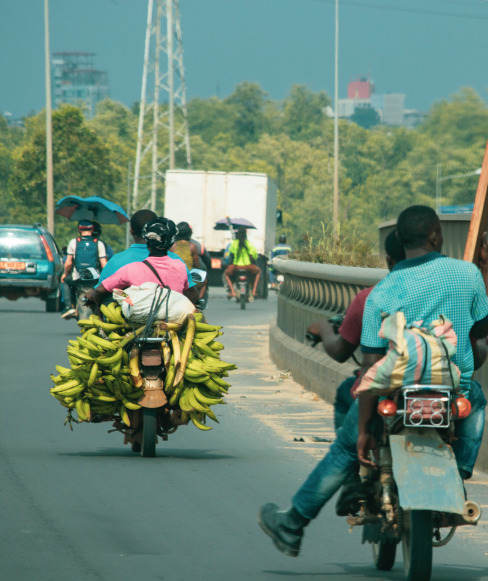
The Southwest region
Limbe region
The Limbe region is a splendid site surrounded by miles of lush greenery with a view of the Atlantic Ocean, and Mount Cameroon in the background, with beautiful black and grey sandy beaches, many islands, and Botanical Park and the historical site of Bimbia, classified as the largest former slave deportation site in Africa.
Mount Cameroon
Once called the “Chariot of the Gods” by the father of history, Herodotus, it is considered the tenth highest African peak, after Jebel Toubkal in Morocco. It remains an active volcano and the highest point on the border between Central Africa, Cameroon, and West Africa, at nearly 4,095 meters. Mount Cameroon is located in the city of Buea with 100 m altitude; it is not only the highest peak in West Africa but also the most active volcano.
The Western Region
The Western Region is hilly with beautiful rivers interspersed with impressive falls, and crater lakes. It is a region of traditions and cultures. The Western Region is characterized by the richness and enhancement of its cultural heritage; a network of several national and community museums, chiefdoms, and festivals (e.g. Ngoun – a gathering celebration of the Bamoun people in November/December with traditional dance).
Bandjoun Chiefdom
Bafoussam is a true Bamiléké cultural masterpiece, which constitutes the most imposing and beautiful chieftaincy in the country. It is made up of several traditional huts, recognizable by their conical tin roofs. A large hut that dominates the village is 17 m high and still serves as a meeting place for the chief and his assembly of notables. There is also a museum with a collection of objects representative of Bandjoun’s cultural and artistic heritage (royal thrones, masks, beaded objects, and fabrics with enigmatic motifs).
Chiefdom of Foumban
Foumban, thanks to its internationally renowned craftsmanship, is also known as the city of the arts in Cameroon. The city is endowed with a magnificent Royal Palace, considered a UNESCO World Heritage Site, which was built in 1917 by the famous Bamoun king, Sultan Ibrahim Njoya. It also contains two museums: the Palace Museum and the Museum of Arts. The Palace Museum tells the story of the Bamoun dynasty. It is famous for its long history, its remarkable quality of art, and the conservation and restoration of its magnificent collections. This museum houses a collection unique in Africa that belonged to the Bamoun rulers, of which King Njoya Ibrahim was one of the most famous. The Museum of Arts has nearly 3,000 works of art and historical pieces, some of which are over 600 years old and tell the story of one of the oldest kingdoms in Africa.
Further reading
“Cameroon Travel Guide: Culture – Sightseeing – Activities – Hotels – Nightlife – Restaurants – Transportation” by Alex Pitt: This guidebook provides practical information for travelers exploring Cameroon, including details about attractions, accommodations, and local culture.
“Cameroon: The Bradt Travel Guide” by Ben West: Bradt Travel Guides are known for their in-depth coverage of various destinations. This guide offers insights into Cameroon’s natural wonders, cultural heritage, and practical travel advice.
“Cameroon: The Story of a Country and Its People” by Michael Lambert: While not solely focused on tourism, this book provides a comprehensive overview of Cameroon’s history, culture, and geography, which can be useful for travelers seeking to understand the context of the places they visit.
“Cameroon Adventure Guide” by Annelies M. Gentile: This guidebook aims to help adventurous travelers explore Cameroon’s diverse landscapes, cultures, and outdoor activities.
The development of entrepreneurship as a major issue in Cameroon
Cameroon is often talked about for its national football team, the “Indomitable Lions”, but Samuel Etoo’s country is striving to be known also for the development of its local know-how. The creation of companies and start-ups in Cameroon appears to be a solution to the problem of youth unemployment. The new panacea of African development has arrived, it is the company perceived as the new vector of growth, the generator of employment, and the engine of socio-economic progress to put forward the African know-how in general and that of Cameroonians in particular. However, at a time when industry is based on production, entrepreneurship in Cameroon remains essentially based on simple trade. Those who start a business very quickly encounter numerous financial, administrative, or personal difficulties. The risk of abandonment or failure remains high.
The stagnant development of entrepreneurship in Cameroon is linked to the lack of support for young entrepreneurs (e.g. the absence of business incubators), the difficult access to information on business opportunities, and the lack of qualified personnel for the management of the business. In short, Cameroonian entrepreneurship needs real support to allow the blossoming of Cameroonian know-how. Entrepreneurship plays a key role because of the contribution that enterprises, especially micro, small, and medium enterprises (SMEs), make to the economic growth of a country. A country like Cameroon, which is striving for emergence by 2035, needs action to ensure the rapid growth of these SMEs.
Samuel Etoo’s country is endowed with intellectual wealth [Cameroonian talents] because the development of entrepreneurship and young know-how will make Cameroon even better known. This makes Cameroon a land of opportunity.
Good to know
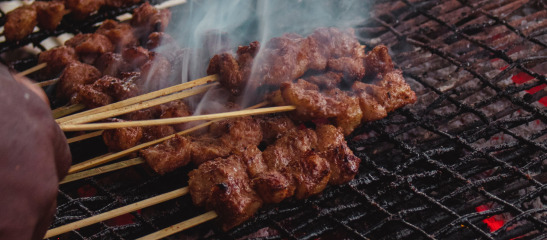
Food
Cameroon boasts of gastronomic diversity with nearly 200 culinary varieties, each of them special and delicious. Many ethnicities live in Cameroon, and each of them has its own cuisine and traditions. Most foods include meat, fish, and spices. If you visit Cameroon, do not return home before trying meals such as Ndole, Sangha, Eru, Kati Kati, Mbongo soup, Achu. On the shores of the ocean, people prefer seafood, especially fish, just to name a few.
Climate
Cameroon has different climates throughout the country. Dry and rainy seasons alternate in the country, with the dry season generally lasting from November to April. Temperatures range from 23 to 31 degree Celsius in January to 21 to 35 degree Celsius in July.
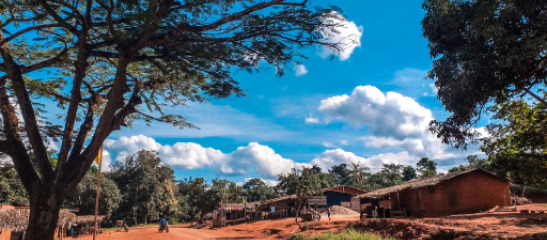
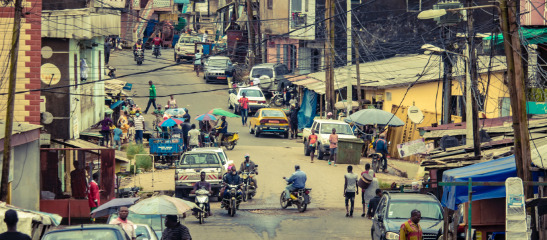
Population
Cameroon has more than 240 tribes which are part of three main ethnic groups: Bantus (e.g. Beti, Bassa, Bakundu, Maka, Douala, Pigmies), Semi-Bantu (e.g. Bamileke, Gbaya, Bamoun, Tikar), Sudanese (e.g. Fulbe, Mafa, Toupouri, Shoa-Arabs, Moundang, Massa, Mousgoum).
Language
The official languages spoken are French and English because Cameroon was colonized by British and France. There are eight French speaking regions and two English speaking regions. However, there are still up to 230 other languages that are spoken.
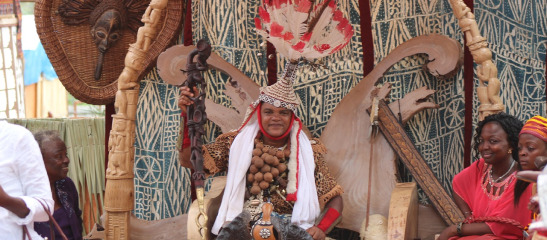
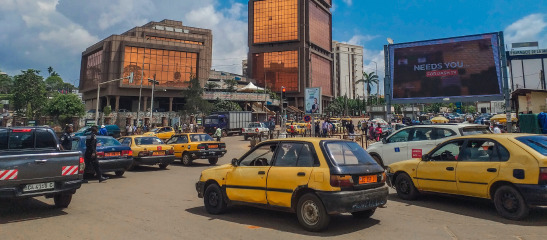
Transport
Means of transport include railways, roadways, waterways, and airlines. In urban centers like Yaoundé and Douala, online booked taxi services like yango are constantly increasing. Nevertheless, common means of transport like taxis, mini-buses and motorcycles are frequently used by Cameroonians within the town. For long distances, buses are available for a comfortable trip. Fares are handed in cash to the conductor or the travelling agency.
Money
The Central African CFA franc is the currency of six independent states in Central Africa including Cameroon. Bank notes of the currency are used in denominations of 500, 1000, 2000, 5000 and 10000 francs while coins circulate in denominations of 25, 50, 100 and 500 francs.
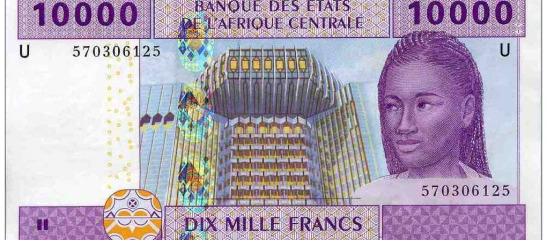
Meet the Cultural Consultant
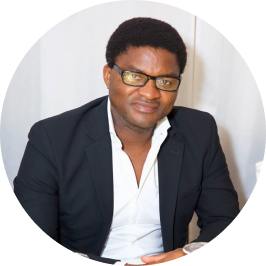
Dr. Jacques Fulbert Owono
“We live by the love and sacrifice of others.”
Dr. Jacques Owono is the Founder and Chairman of the Board of our local partner organisation, Home Coming Africans (HCA). He is an ethics adviser, development cooperation associate, expert in project management, migrant integration and religious issues and the resolution of related inter-religious conflicts, adviser to companies on the resolution of conflict resolution, and expert in the training of teachers, nursing staff, diplomats or international companies. He holds a PhD in Development Ethics from the University of Bayreuth, Germany, in collaboration with the Universities of Freiburg, Switzerland. Currently he is about to complete his second PhD in Religious Studies through the Université de Montréal, Canada.
His fields of expertise include development ethics, political ethics, religious ethics, religious studies, conflict prevention and resolution strategies, education and spread of radical Islam in Central Africa.
Dr. Jacques Owono is in charge of conceptualising the Cameroon tours, preparing topical inputs for briefing sessions and discussions, and coordinating coalitions with relevant partners and stakeholders that are involved in the tours.
Meet the Guide
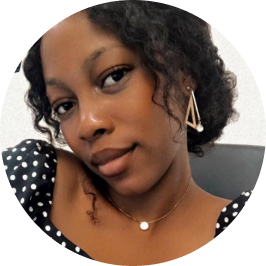
Vanessa Lebogo
“I am passionate about travel, and discovery. I will be very happy to coordinate your stay in the Land of living. Making your trip to Cameroon an unforgettable stay is my priority. My hope is that Farafina Travels will restore the image of Cameroon for travelers through its historical and cultural beauty. Cameroon is waiting for you, ready to reveal its secrets and offer you an unforgettable trip.”
Vanessa Lebogo is the coordinator of Farafina Travels in Cameroon. She is an executive assistant and a student in Translations and Tourism. Vanessa is an origin of the Central Region of Cameroon and as such, a true ambassador of it. This project is a boon because it will restore the Cameroonian tourist image. To publicize the historical and cultural beauty of Cameroon. Cameroon is waiting for you, ready to reveal its secret and offer you an unforgettable trip.
Royene Ngale (aka Roys)
“I love to travel and see new places and get to know different cultures whenever I can. I would love to encourage you to visit my hometown, Limbe, and experience the diverse culture of Cameroon in one place. I am looking forward to showing you the beauty of my town Limbe.”
Royene Ngale (aka Roys) is a small business owner for event planning and interior decoration. Her home town is Limbe in the South West Region Of Cameroon.


Pierre Fanava
“I am passionate about showing visitors the wonderful sites in my native region. I will be happy to show you the wonders of North Cameroon. I say “DJABBAMA” (Welcome) and I hope to see you soon!”
Pierre Fanava is an actor and social worker. He is from North Cameroon. He has a Master’s Degree in Human Rights and Humanitarian Action from the Catholic University of Central Africa in Yaoundé. He is passionate about improving the living conditions of people in need and has worked in several humanitarian organizations in the North of Cameroon. Through his work he has been able to visit diverse areas of the Northern Region and gain valuable insight knowledge about it. Currently he is working for an NGO helping victims of the Boko Haram sect in the far North of the country.
Pamela Ngimbous
“I am passionate about Cameroon’s culture and eager to promote it. I am delighted to let visitors discover the wonders of Cameroon’s diverse sites and share with them my knowledge about my country’s history and various cultures. Welcome to ‘Africa in miniature.”
Pamela Ngimbous is from the Central Region of Cameroon. She holds a Medical Health Engineering Diploma and works in partnership with organizations whose mission it is to work for the well-being and health of people.

Partner organisation
Home Coming Africans (HCA)
Founded in 2018, Home Coming Africans (HCA), is a non-profit, socio-humanitarian association whose general objective is to support the public policies of African states, particularly Cameroon:
- In terms of immigration, by promoting the return/reintegration of the African diaspora/migrants through appropriate support measures;
- Flight/irregular immigration of young people by raising awareness and setting up employment/self-employment initiatives;
- Promotion of regular immigration of young Africans to the West/World by setting up a network to provide help and information on job offers and grants, as well as enrolment in qualified universities.
The association Home Coming Africans (HCA), the parent association based in Germany, and Home Coming Cameroun (HC-Cameroon), based in Yaoundé.
Upcoming Events
10 May 2024
Cameroon
Cameroon Tour

